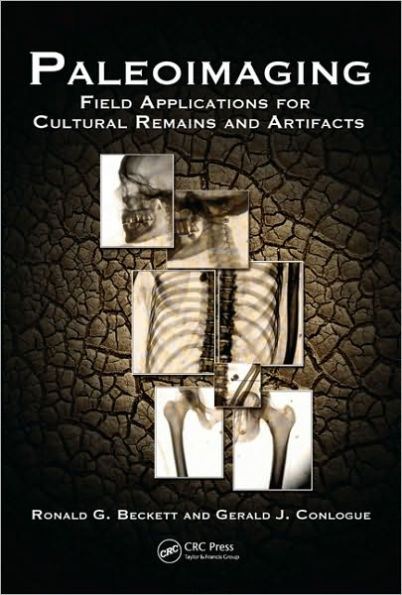The authors are obviously experts; their knowledge and, more importantly, their experience, are impressive.
—Brenda Clark, M.A., Camosun College, Victoria, BC, Canadian Society of Forensic Science Journal, Vol. 43 No. 1, March 2010
The book provides great detail, but it is not tedious reading. The number of pages (390) is just about right, not too long, and filled with many interesting pictures demonstrating creative, in-the-field set-up with corresponding images. I was impressed with the flow of the book … Each chapter logically builds upon the next. Case studies, tables, and templates of forms for documentation enhance the text with practical information. The companion CD provides a nice personal touch, giving one the feel of attending an experience is vividly portrayed in this book. I only wish I had the advantage of reading this book fifteen years ago, prior to my first forensic in-the-field experience. It would have enabled me to be more confident, and devoid of even the slightest glimmer of timidity when confronted by unexpectedly unique situations.
– Michael D. Calhoun, R.T., Radiology Director, Shady Grove Adventist Hospital writing in Scientific Sleuthing Review: The Many Uses of Forensic Science
Erudite, yet fascinating ... The authors probably are the most qualified in the world to produce such a book. It offers scientific information and operational practicality spiced with case reports … Both are professors and co-directors of the Bioanthropological Research Institute at Quinnipiac University. …This team acquired a considerable public celebrity through cohosting and narrating stories of their worldwide archeological experiences on Discovery and Learning TV and a 40-episode series, ‘‘The Mummy Road Show’’ sponsored by the National Geographic Channel. … Conlogue’s explanations of radiation physics and radiation protection are remarkably lucid. Beckett explains the function and operation of the spectrum of medical and industrial endoscopes available.
…Paleoimaging is copiously illustrated with about 380 black and white images. … some radiographs and most of the color photographs (47 in all) are duplicated on glossy paper in a 12-page insert. ... While this volume focuses on antiquities and anthropological remains, it is just as useful as a guide for field studies of the living with minor technical modification to accommodate musculoskeletal, respiratory, circulatory, and peristaltic motion. It is highly recommended to any forensic scientist whose field work requires the collection of on-site internal images of subjects investigated.
– B.G. Brogdon, MD writing in Journal of Forensic Sciences March 2010, Vol. 55, No. 2
This book is an excellent -resource for any project team considering the use of multimodal imaging in the field, laboratory, or museum. The book is well-written and provides sufficient detail on the use of these imaging methods to assist with project planning.
— SAS Bulletin
The cost-effective and nondestructive nature of many paleoimaging technologies make the book a timely reference to those interested in preserving rare fossils or those objects that cannot be sampled or removed from their geological context
—llya V. Buvnevich, Department of Earth and Environmental Science, Temple University, in Palaios
The authors are obviously experts; their knowledge and, more importantly, their experience, are impressive.
—Brenda Clark, M.A., Camosun College, Victoria, BC, Canadian Society of Forensic Science Journal, Vol. 43 No., 1 March 2010
The book provides great detail, but it is not tedious reading. The number of pages (390) is just about right, not too long, and filled with many interesting pictures demonstrating creative, in-the-field set-up with corresponding images. I was impressed with the flow of the book … Each chapter logically builds upon the next. Case studies, tables, and templates of forms for documentation enhance the text with practical information. The companion CD provides a nice personal touch, giving one the feel of attending an experience is vividly portrayed in this book. I only wish I had the advantage of reading this book fifteen years ago, prior to my first forensic in-the-field experience. It would have enabled me to be more confident, and devoid of even the slightest glimmer of timidity when confronted by unexpectedly unique situations.
—Michael D. Calhoun, R.T., Radiology Director, Shady Grove Adventist Hospital writing in Scientific Sleuthing Review: The Many Uses of Forensic Science
Erudite, yet fascinating ... The authors probably are the most qualified in the world to produce such a book. It offers scientific information and operational practicality spiced with case reports … Both are professors and co-directors of the Bioanthropological Research Institute at Quinnipiac University. …This team acquired a considerable public celebrity through cohosting and narrating stories of their worldwide archeological experiences on Discovery and Learning TV and a 40-episode series, ‘‘The Mummy Road Show’’ sponsored by the National Geographic Channel. … Conlogue’s explanations of radiation physics and radiation protection are remarkably lucid. Beckett explains the function and operation of the spectrum of medical and industrial endoscopes available.
…Paleoimaging is copiously illustrated with about 380 black and white images. … some radiographs and most of the color photographs (47 in all) are duplicated on glossy paper in a 12-page insert. ... While this volume focuses on antiquities and anthropological remains, it is just as useful as a guide for field studies of the living with minor technical modification to accommodate musculoskeletal, respiratory, circulatory, and peristaltic motion. It is highly recommended to any forensic scientist whose field work requires the collection of on-site internal images of subjects investigated.
— B.G. Brogdon, MD writing in Journal of Forensic Sciences March 2010, Vol. 55, No. 2
This book is an excellent -resource for any project team considering the use of multimodal imaging in the field, laboratory, or museum. The book is well-written and provides sufficient detail on the use of these imaging methods to assist with project planning.
— SAS Bulletin
The cost-effective and nondestructive nature of many paleoimaging technologies make the book a timely reference to those interested in preserving rare fossils or those objects that cannot be sampled or removed from their geological context
—llya V. Buvnevich, Department of Earth and Environmental Science, Temple University, in Palaios






